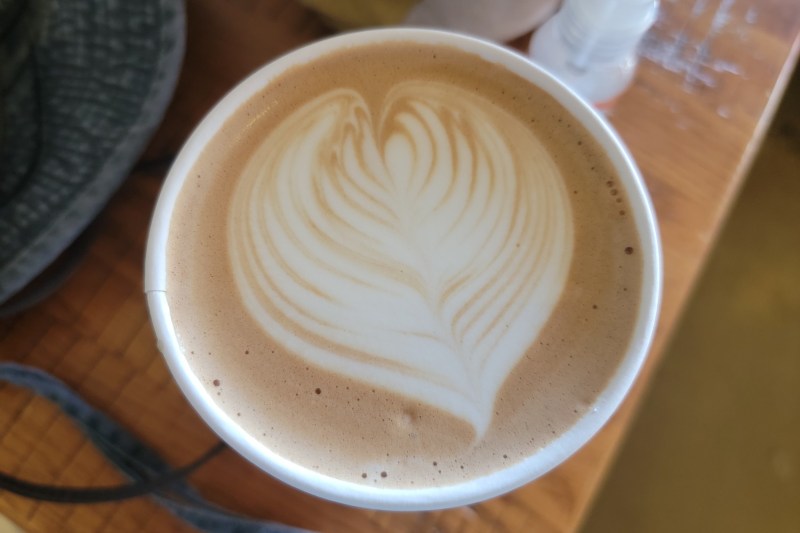I thought I’d heard of every type of coffee imaginable, from Kopi Luwak to chicory coffee. Turns out I was wrong. Different coffee roasts are characterized by their roasting temperature and time, yielding different brews, from light to ultra-dark roasts. But there’s one variety that many haven’t heard of: white coffee. Named after the color of the beans when roasted, this half-roasted coffee dates back to the 15th century in Yemen.
Below, we’ll dive into all the most common questions about white coffee, from the basics of “What is white coffee?” to how to brew it at home.
What is white coffee?

White coffee is coffee roasted only halfway through at a lower temperature than other roasted coffee beans. As Owais Zafar from FreshCoffeeBlog said, think of the roasting process of white coffee as “a slow dance” or a “culinary ballet that takes place over an extended period.” The “methodical roasting method allows the beans to retain their natural flavors, resulting in a brew that is “lighter in color but harder in texture.”
Unlike the roasting process of dark roast coffee, the heat doesn’t penetrate the coffee beans when roasting white coffee. White coffee is roasted at about 325 degrees Fahrenheit, compared to about 400 to 475 degrees Fahrenheit for traditional coffee, depending on the roast.
When I first heard about “white coffee,” I pictured a stark white cup — almost like how frothed milk would look. However, to the naked eye, it’s not easy to see a real difference in color when looking at a brewed cup of white coffee. You might be able to tell by checking out its translucency, but this isn’t necessarily easy either. However, the difference is more noticeable in the beans before brewing, which showcase their lighter color. It’s much easier to taste the difference of white coffee than to see it.
Where did white coffee come from?

After “What is white coffee?” my second question (and probably yours, too) is about the origins of this mysterious coffee drink. I’ve been to hundreds of coffee shops, and I can’t say I’ve ever seen this variety of coffee listed on a coffee menu. Turns out, white coffee originated in Yemen as part of a tradition of mixing coffee with a blend of spices known as Hawaij. This slightly sweet spice blend contains classics like cinnamon and cardamom, which enhance white coffee’s slightly nutty and acidic flavor.
Even though white coffee has been popular for centuries in countries like Yemen, Indonesia, and Malaysia, it became increasingly popular around 2021 when influencers started boasting about the health benefits of white coffee. White coffee may be a healthier alternative to regular coffee due to its higher antioxidant and chlorogenic acid content.
The short, lower-temperature roasting process of making white coffee allows the beans to retain more antioxidants and chlorogenic acid. These substances may help reduce inflammation and fight against cellular damage. Regular coffee drinkers who get frustrated with coffee stains on their teeth have also switched to white coffee for a lighter alternative.
White coffee taste and caffeine content

The key component of white coffee’s difference from regular coffee is the shorter, lower temperature at which the beans are roasted. The roasting process is directly connected with the flavor profile, so you can expect white coffee to have a much milder flavor profile than regular coffee. White coffee is said to have a slightly nutty taste without any caramelization flavors. The origins of the beans, of course, also affect the taste. The flavor profile of white coffee is a “departure from traditional bitterness of darker roasts,” yielding a lighter, much more light-tasting coffee.
White coffee contains more caffeine than regular coffee, resulting from shorter roasting time. The bean’s natural caffeine content will begin to burn off during roasting. This is why lighter roast coffees tend to have slightly more caffeine when compared to dark roasts — however, the difference in caffeine content of white coffee vs. regular coffee has sparked some debate. Some sources note that white coffee contains up to 50% more caffeine than regular coffee, whereas other sources suggest the caffeine content is negligible, at only about 5.4%.
Making white coffee

The hard texture of white coffee beans is too hard to use with most coffee grinders, which means it’s challenging to make white coffee at home. Even if you think you have an ultra-strong grinder, it’s not worth the risk of damaging the blades. You can purchase white coffee in a pre-ground state to make brewing easier, such as Fidlago Coffee’s Buy at Fidalgo Coffee White Coffee.
Once you have white coffee in a finely ground state, it’s easy to brew using an espresso maker, Moka Pot, or an AeroPress. From here, you’ll brew white coffee using the same steps as you’d use to brew any other kind of coffee.




